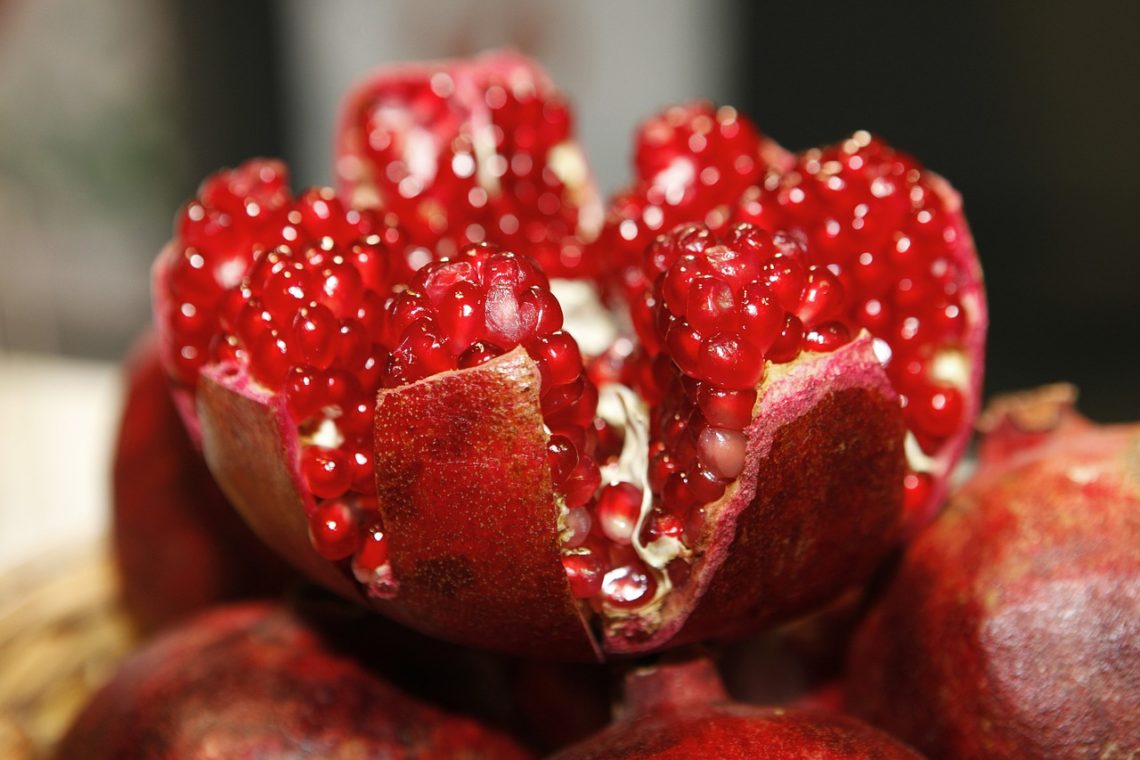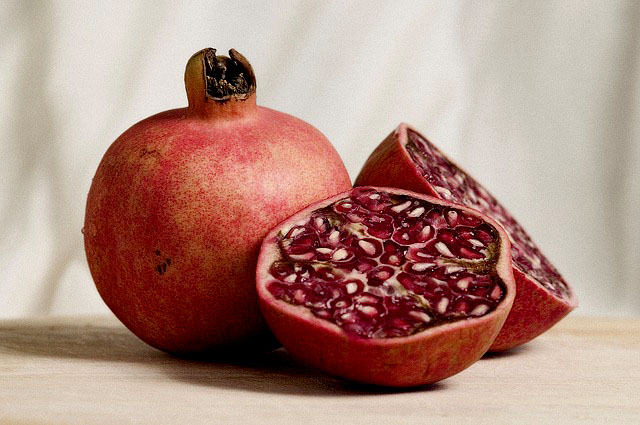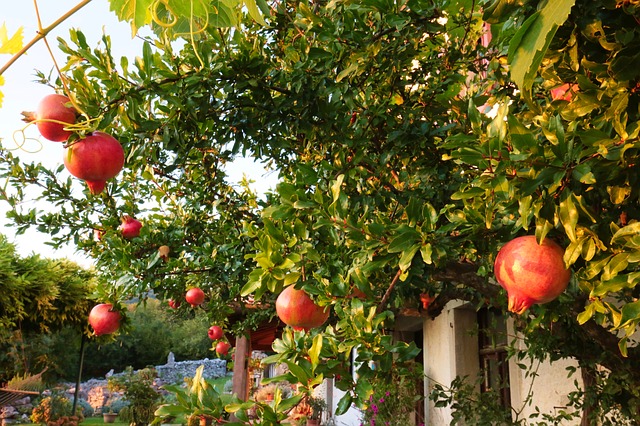
Pomegranate Cultivation in India – A Complete Guide
Pomegranate is a wonderful fruit. It is known for its tiny red seeds that are eaten which are also called arils. Even though it is a fruit that a lot of people are fond of, not many of them are aware of its growth in India. In our country, it is grown in about seven hundred tons production wise. The pomegranate is grown in various regions all over India. If you’re interested in knowing how, where, and when this majestic fruit is cultivated, stay tuned further.
Contents
The Status of Indian-Grown Fruits Abroad
 Being the leading grower of the fruit in India, pomegranates are a huge deal in Maharashtra. Over the years, it has been known as an important fruit grown here. Although it is commercially only cultivated in this state, they are seen in states like Karnataka and Tamil Nadu as well in small portions. If you’re wondering what the export facilities are like, we have the answer. The fresh and premium quality pomegranates are shipped to Middle-eastern countries like Bahrain and the United Arab Emirates along with a few European countries as well.
Being the leading grower of the fruit in India, pomegranates are a huge deal in Maharashtra. Over the years, it has been known as an important fruit grown here. Although it is commercially only cultivated in this state, they are seen in states like Karnataka and Tamil Nadu as well in small portions. If you’re wondering what the export facilities are like, we have the answer. The fresh and premium quality pomegranates are shipped to Middle-eastern countries like Bahrain and the United Arab Emirates along with a few European countries as well.
Different Types of Pomegranates Grown in India
Before we get into the commercial aspect of the fruit, let us enlighten you on the types of pomegranate grown in India. Naming them one by one, they are;
- Alandi/Vadki
- Dholka
- Kabul
- Muskati Red
- Paper Shelled
- Spanish Ruby
- GB I (called Ganesh locally)
- G 137
- P 23
- P 26
- Mridula
- Aakarta
- Jyoti
- Ruby and
- IIHR Selection.
There are some types missing that are not listed here, but we shall leave them as they are not that well known. As you can see, there are several varieties of pomegranate grown in India. However, let us focus on some of the main types.
The Types and Information You Need About Them
- The Alandi or “Vadki” is one of the most known type of pomegranate. As India is home to the finest types of the fruit, like we said earlier, they contain less acids and are fresher. This is however not the case for pomegranates found abroad. Coming back to “Alandi”, it is one that is more or less medium in size. It can be either blood red or magenta on the inside, with a distinct acidic and sweet taste. Its seeds are hard but are enjoyed nevertheless.
- The Bhagwa, or Shendria is our next variety. It is made from crossing the F2 population of Ganesh with the Gulesha Red pomegranate. The crossing makes it attractive on the outside, being a glossy red color. Unlike the Alandi, this is a soft seeded type of pomegranate.
- The third one we will be talking about is the Mridula. Being similar to another variety called the Ganesh, it is often mistaken for it. However, it can be distinguished from other types by the insides. The inside of the Mridula pomegranate is a deep, dark shade of red. It weighs about 250 to about 300 grams per fruit.
Now that we’ve briefed you on the status of pomegranates in India and its types, we would like to talk about the cultivation aspect of it.
Cultivation Aspects and Requirements

-
Climate and Soil Requirements
When it comes to growing anything, the first thing that comes to mind is the climate requirements. In order to move forward with pomegranate cultivation in India, one would require having semi-arid conditions that can be grown up to an altitude of 500 m above ground levels. So basically, they can be grown in hot and dry weather as well as winters so long as the required facilities are available. These points have to be present especially during the time of ripening and development. Perfectly executed soil that is drained well and is sandy pr alluvial in nature is ideal for pomegranate trees to be cultivated.
-
Ideal Plantation Method
From a farmer’s perspective, the ‘square’ method of plantation is ideal for pomegranate farming. Pits are dug into the ground that should be about 60 cm thrice each. These are usually kept ready thirty days before the actual planting process begins. Keeping these pits under the sun for about a fortnight should ensure an ideal cultivation journey. There are a lot of pomegranate-farming tips available but one of the most important one is making sure to use the required precaution against termites. During the pits stage, make sure to use any form of prevention.
After the pits are ready, they are filled with around 20 kg of farmyard manure that is mixed with topsoil and 1kg of super phosphate. The pits are then watered in order to have the soil settle down for plantation. Then, the cuttings are placed carefully, ready to be planted. After this is done, irrigation should be provided to them. By following the pomegranate farming techniques given above, these fruits should be well developed as it has been given so by experts.
If you’re looking to know how to grow pomegranate trees, this procedure should be fine to follow. Now that we know the technique and planting method of cultivating, we now move on to maintenance. By this we refer to the nutritional needs of the plantations in order to receive an ideal form of pomegranate tree and fruit.
Nutritional Needs and Maintenance
A lot of government sources recommend using fertilizers that are 600-700g in quantity. Again, farmyard manure comes into the play and 10kg should be enough. Also, a dose of ammonium sulphate should be enough for a tree that is about 5 years old. When it comes to when to apply, the months of December and January is ideal for ‘ambe bahar’. However, for the Mrig bahar, May and June seems perfect. Lastly, Hasta bahar requires the months of October and November.
Do keep in mind that after the ‘bahar’ treatment, doses of Nitrogen fertilizer should be applied in split doses for the best results. This should be done at the time of irrigation and next when three weeks have been completed. One of the important pomegranate farming tips is to apply topsoil over the fertilizers applied and should be irrigated once again. This is done to seal the deal in order to prevent any mishaps.
After the maintenance, the flowering of the trees may be induced around June-July for Mrig Bahar, September and October for hasta bahar and January-February for ambe bahar.
Now that we know how they can be planted and given nutrition, we move on to the prevention of harm.
Precautions Against Destruction.
-
Insects
Many a times, insects and other pests tend to ruin the hard work put into the cultivation process. This happens especially in the case of pomegranate cultivation. However, there are a few precautions and medicines that can be given to ensure that the plants are protected. Insects like mealy bugs and aphids that can ruin not only the plant but the fruits as well.
Depending on the type and severity of the infestation, certain items can be applied. Dimethoate, deltamethrin or malathion can be sprayed can be effective in the case of bug infestations.
-
Fruit Rot
You might find that sometimes along the cultivation process, fruits tend to rot or the leaves endure something called the ‘leaf spot.’ These act as diseases that might show up on the way. Mancozeb and Kavach are found to be effective in these cases.
Conclusion
To conclude, we would like to brief you on the post-harvest management process. The fruits are first graded on the basis of quality, color, size and weight. They are then stored and can be done so up to about two months. The pomegranates are then packed well and transported via trucks and Lorries. Lastly, they are marketed across the country and even beyond.
So, you see there is a huge process to the cultivation of this magnificent fruit.


